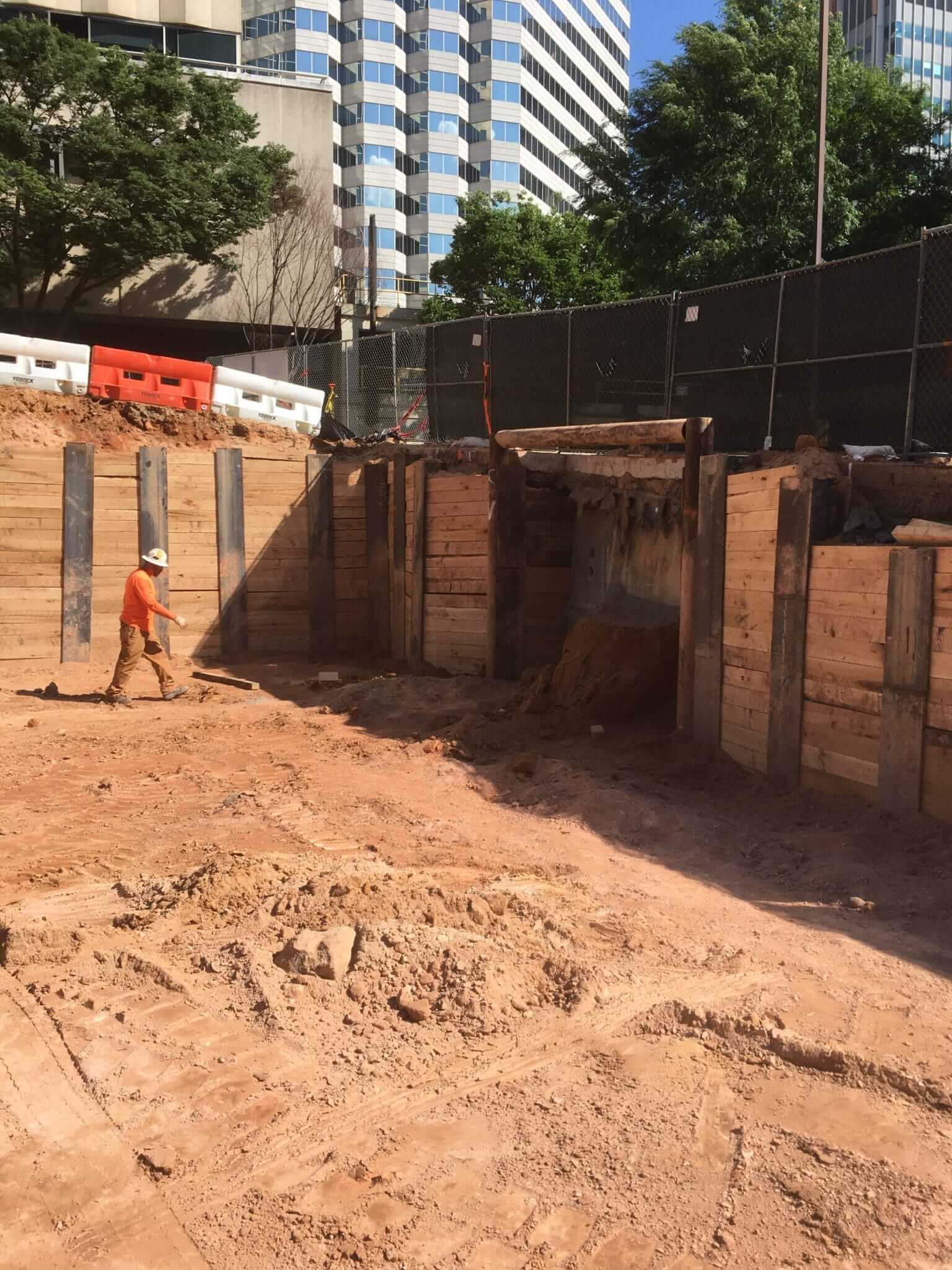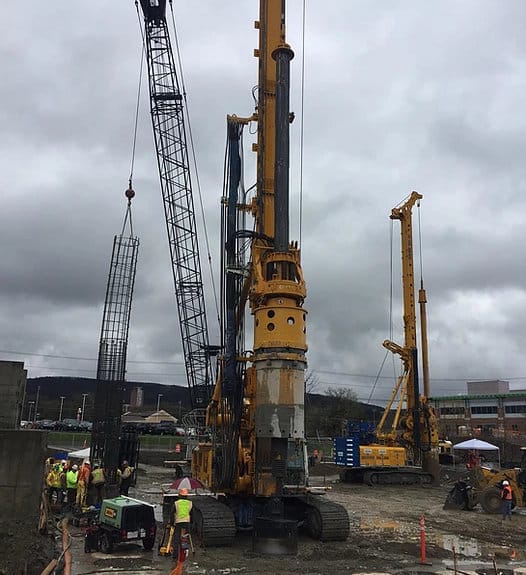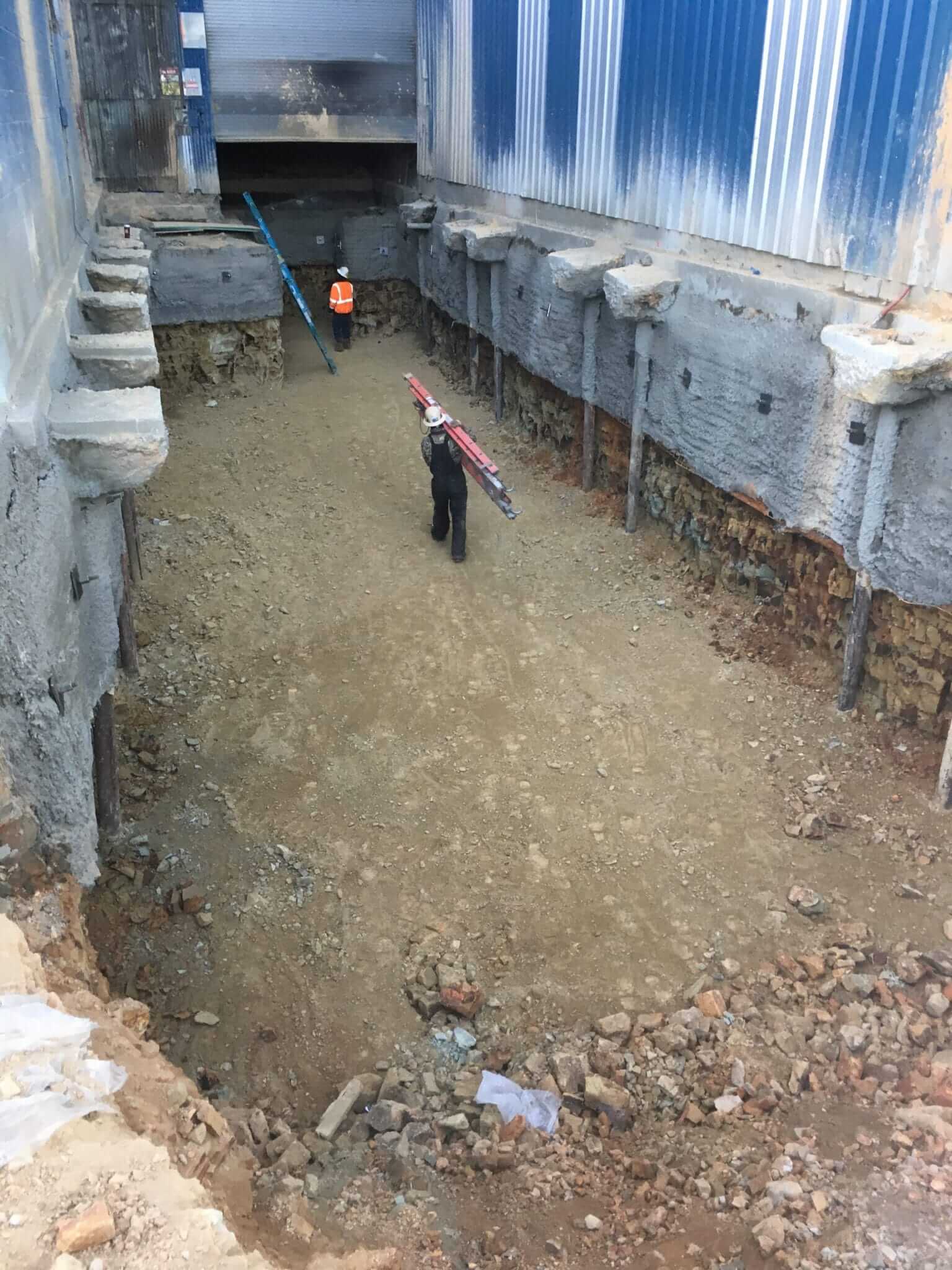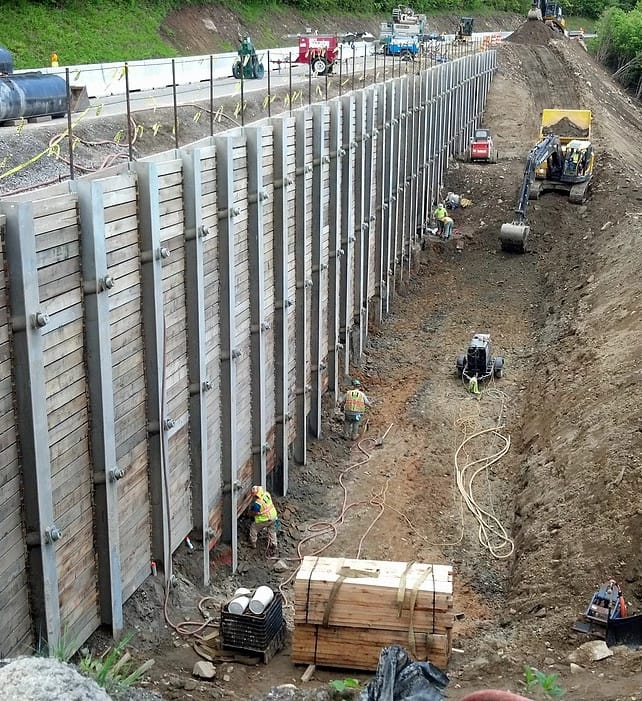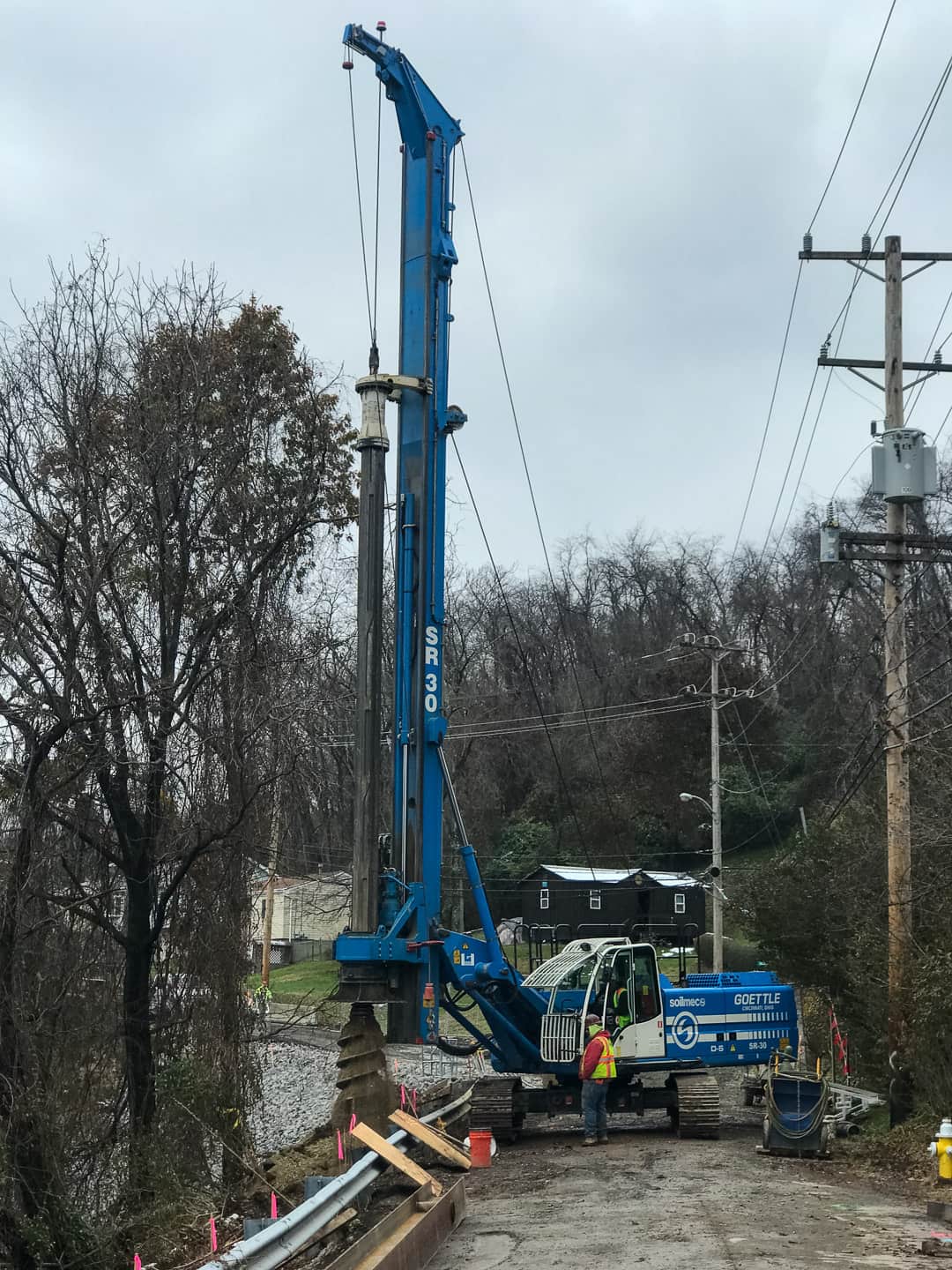Earth Retention
Earth Retention systems are utilized to protect adjacent streets, buildings, utilities, etc. while an excavation takes place. Typically used methods are soldier pile and wood lagging, sheet piles, shotcrete & soil nails, tangent walls and secant walls. These systems can either be cantilevered, tied back or internally braced depending upon the wall height and soil conditions. They can also be structurally permanent or temporary, based upon the final construction requirements.
Soldier pile and wood lagging is a widely used and effective earth retention system. Soldier piles are drilled or driven at regular intervals along the perimeter of the excavation. Once the excavation starts, wood lagging is installed to maintain the excavated face. Soldier pile walls can cantilever or be laterally braced to suit the specific needs of the project.
When the retained soil cannot be de-watered, a sheet pile earth retention system is an effective solution. Sheet piles are steel sections in a wide variety of cross-sectional shapes – all with the ability to interlock with one another forming a continuous, watertight wall. The sheets are driven or vibrated into the ground. Cantilever walls are typical, but the sheet piles can be laterally braced to suit the specific needs of the work site. Being manufactured from steel, they offer a high strength material with excellent quality control.
When an excavation takes place next to an existing structure, a secant or tangent pile wall can be an excellent solution. Tangent & secant walls are a series of interlinking or adjacent concrete drilled piers or piles installed along the perimeter of the excavation. This method of earth retention not only allows for a high degree of alignment flexibility, it provides a structurally stiff wall, which minimizes settlement concerns of the adjacent structures.
A soil nail wall is constructed from the top – down, excavating in lifts of about five feet. At each lift, a soil reinforcement element – a soil nail – is installed and shotcrete is applied to the exposed earth face. This process continues to the required depth. Once completed, a reinforced soil mass is in place to resist the lateral earth forces. This type of earth retention can follow nearly any alignment and can be constructed in any type of soil that can stand vertically for five feet for a work shift. Soil nailing employs relatively small installation equipment and is well suited for close quarters.
Integrated wall solutions combine that of permanent earth retention systems and in-situ concrete placement or the use of precast concrete panels. The first is to pour the liquid concrete material into forms against the existing PERS (Permanent Earth Retention System); this is so-called in-situ concrete. The other method used is called precase concrete, in which panels of specific size are manufactured in a central plant and later brought to the job site for fast, clean assembly.
Common applications of integrated wall solutions include; highway (DOT), railroad, retaining walls, bridge approaches and abutments.
Slopes and embankments frequently experience settlement, stability and erosion problems. Axiom offers various solutions to these problems. From landslides to construction cuts into hillsides, remediation or an earth retaining structure is required to maintain the slopes’ stability.
Ground anchors, micro piles, anchored reaction blocks, and anchored retaining walls are all stability solutions that not only reinforce the soil but also control erosion. Anchored reaction blocks are ideal for newly failed slopes, applying loads to stabilize the soil. Ground anchors and micro piles create a stabilized ground reinforcement system which resists the driving forces of the slope. Anchored Retaining Walls are ground modification systems that include drilled or driven vertical elements that extend below potential failure planes. Drilled and grouted tieback anchors provide additional stabilization forces.


